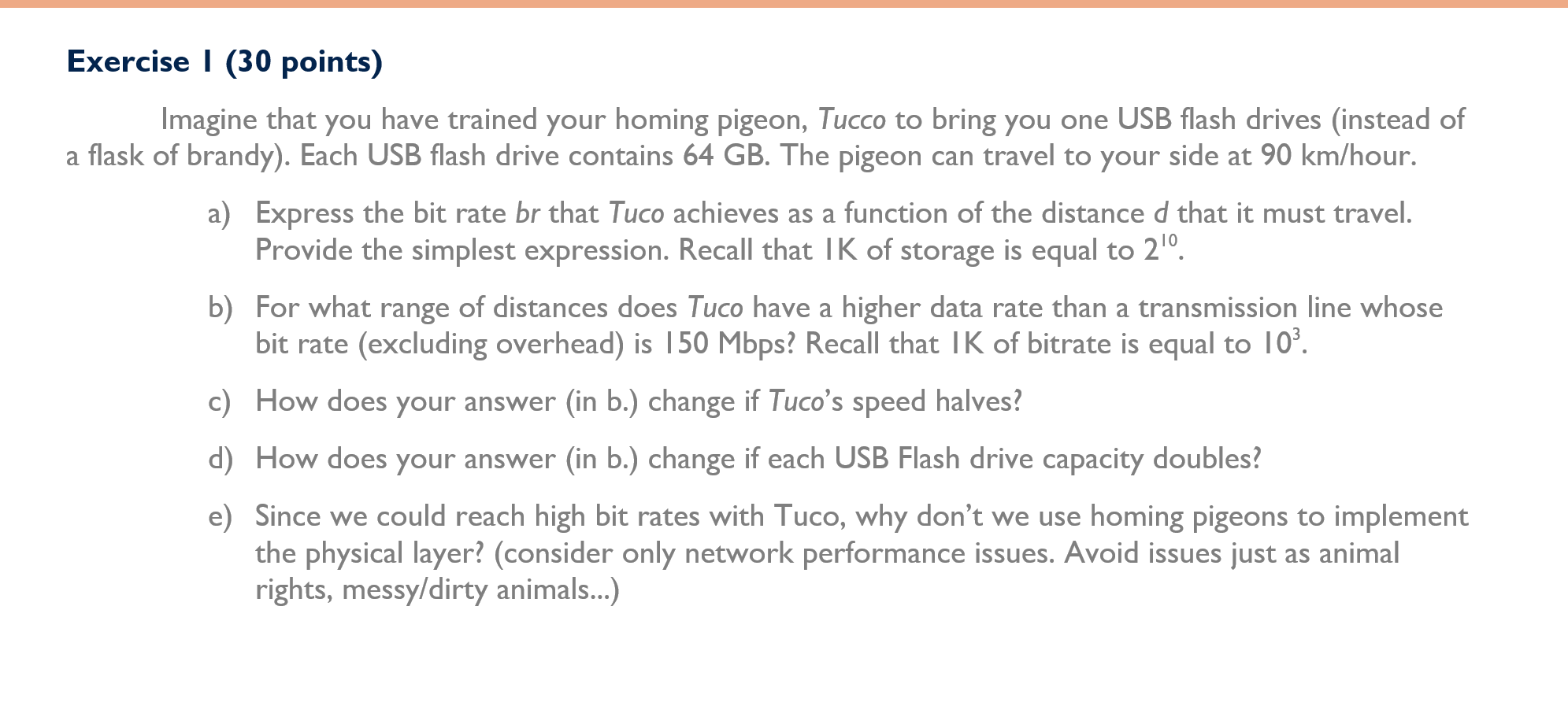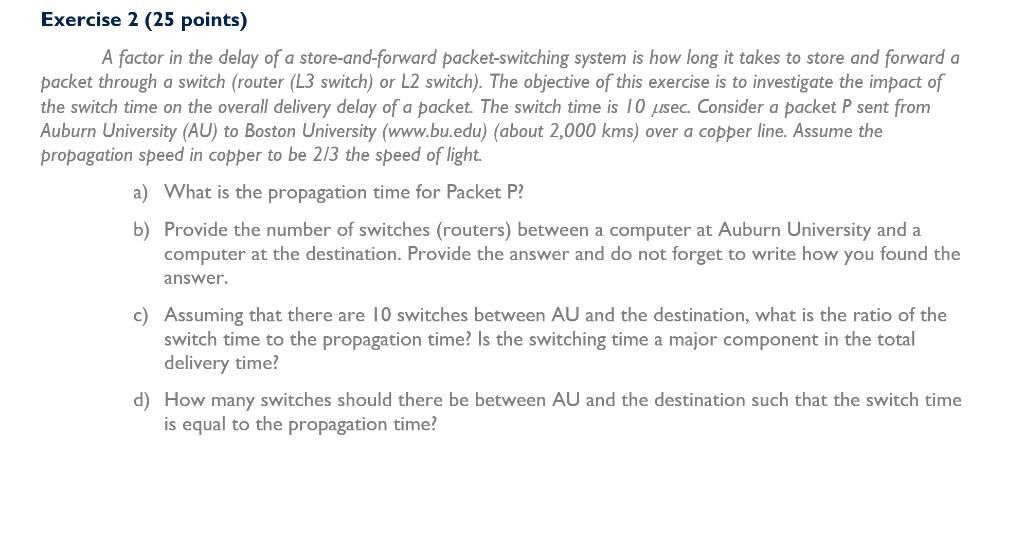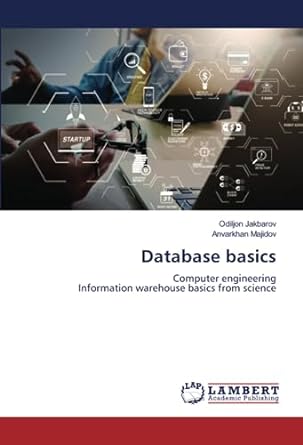

Exercise (30 points) Imagine that you have trained your homing pigeon, Tucco to bring you one USB flash drives (instead of a flask of brandy). Each USB flash drive contains 64 GB. The pigeon can travel to your side at 90 km/hour. a) Express the bit rate br that Tuco achieves as a function of the distance d that it must travel. Provide the simplest expression. Recall that IK of storage is equal to 2'0. b) For what range of distances does Tuco have a higher data rate than a transmission line whose bit rate (excluding overhead) is 150 Mbps? Recall that IK of bitrate is equal to 10%. c) How does your answer (in b.) change if Tuco's speed halves? d) How does your answer (in b.) change if each USB Flash drive capacity doubles? e) Since we could reach high bit rates with Tuco, why don't we use homing pigeons to implement the physical layer? (consider only network performance issues. Avoid issues just as animal rights, messy/dirty animals...) Exercise 2 (25 points) A factor in the delay of a store-and-forward packet-switching system is how long it takes to store and forward a packet through a switch (router (L3 switch) or L2 switch). The objective of this exercise is to investigate the impact of the switch time on the overall delivery delay of a packet. The switch time is 10 sec. Consider a packet P sent from Auburn University (AU) to Boston University (www.bu.edu) (about 2,000 kms) over a copper line. Assume the propagation speed in copper to be 2/3 the speed of light. a) What is the propagation time for Packet P? b) Provide the number of switches (routers) between a computer at Auburn University and a computer at the destination. Provide the answer and do not forget to write how you found the answer. c) Assuming that there are 10 switches between AU and the destination, what is the ratio of the switch time to the propagation time? Is the switching time a major component in the total delivery time? d) How many switches should there be between AU and the destination such that the switch time is equal to the propagation time? Exercise (30 points) Imagine that you have trained your homing pigeon, Tucco to bring you one USB flash drives (instead of a flask of brandy). Each USB flash drive contains 64 GB. The pigeon can travel to your side at 90 km/hour. a) Express the bit rate br that Tuco achieves as a function of the distance d that it must travel. Provide the simplest expression. Recall that IK of storage is equal to 2'0. b) For what range of distances does Tuco have a higher data rate than a transmission line whose bit rate (excluding overhead) is 150 Mbps? Recall that IK of bitrate is equal to 10%. c) How does your answer (in b.) change if Tuco's speed halves? d) How does your answer (in b.) change if each USB Flash drive capacity doubles? e) Since we could reach high bit rates with Tuco, why don't we use homing pigeons to implement the physical layer? (consider only network performance issues. Avoid issues just as animal rights, messy/dirty animals...) Exercise 2 (25 points) A factor in the delay of a store-and-forward packet-switching system is how long it takes to store and forward a packet through a switch (router (L3 switch) or L2 switch). The objective of this exercise is to investigate the impact of the switch time on the overall delivery delay of a packet. The switch time is 10 sec. Consider a packet P sent from Auburn University (AU) to Boston University (www.bu.edu) (about 2,000 kms) over a copper line. Assume the propagation speed in copper to be 2/3 the speed of light. a) What is the propagation time for Packet P? b) Provide the number of switches (routers) between a computer at Auburn University and a computer at the destination. Provide the answer and do not forget to write how you found the answer. c) Assuming that there are 10 switches between AU and the destination, what is the ratio of the switch time to the propagation time? Is the switching time a major component in the total delivery time? d) How many switches should there be between AU and the destination such that the switch time is equal to the propagation time








